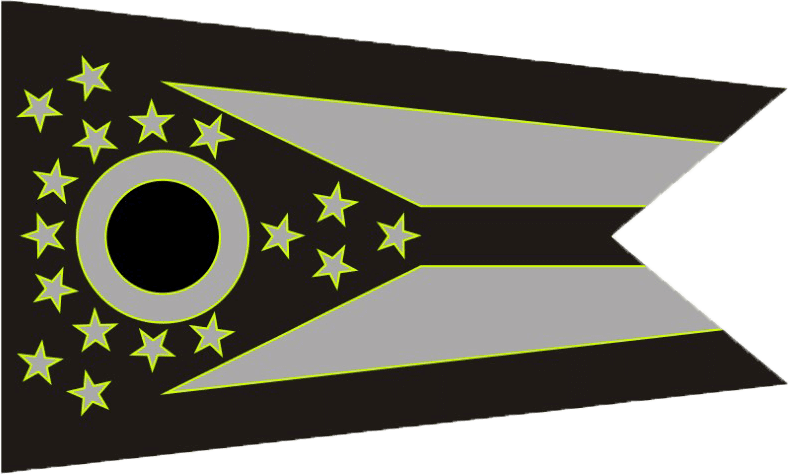

We are Attorneys and We are Riders
We Represent Ohio Cyclists
Had a Bicycle Crash in Ohio?
Contact Ben Dodge to see if the bicycle crash lawyers at Bike Accident Attorneys (BAA) can help. Unlike other lawyers who attempt to represent cyclists, our BAA lawyers actually ride and race their bicycles as well as appear and win in court. Most attorneys are just pencil pushers. We are court room litigators who are passionate about riding our bikes and we have associated local counsel in other states to allow us to help you in your state. Based on our expertise and experience we have also been admitted in other states to appear in court for our bicycle crash clients on a case by case basis. We can help you directly or ensure that you get the quality help you need in your state. Contact Ben Dodge now to see how we can protect your rights.
3 Tips on Choosing the Best Bicycle Crash Lawyer and Avoid Being Scammed
So how do you know if you have the best lawyer? There are 3 things to investigate when hiring a bicycle lawyer that can help you avoid a scammer. Some of that depends on what you think the “best” really means. To me, it is simple. The “best” lawyer will get you to the most advantageous position possible with as little cost as possible. That’s it. Nothing else to it. I have seen too many lawyers give up or miss out on incredible opportunities for their clients because of their own egos arguing the irrelevant issues or pushing too hard in a direction that only generates their own fees as opposed to the results the client would rather have.
The most advantageous position is sometimes not even what the client comes in asking for. I can’t tell you how many times I probably talked myself out of a job in an initial consult because what the client wanted actually puts them in a worse position and I wasn’t afraid to tell them so. It would have been so much easier to just tell them what they desperately wanted to hear, help them feel heard and let them vent a little. All just tell them we better hurry up and rush to court so they can be vindicated. When in reality, that won’t help them at all. So that is what many lawyers do- they try to figure out what the client wants emotionally and then sell them a legal service that matches that emotional need and of course charge them for it based on whatever they think the client is able to pay.
Obviously not all attorneys are this cold-hearted. Many of us actually care. Many of us strive to do right by the client as opposed to just trying to do right by the pocket book.
Here are some general things to watch out for when looking for an attorney, especially a bicycle accident lawyer (I don’t like the word accident, I prefer “crash” – but most of the world uses the term accident and I understand why, so I sue it too). Here are the issues to watch out for:
1) Specific Knowledge
Do they have the specific knowledge required to handle your case? Just because they graduated from law school doesn’t mean they know anything about cycling! In fact, in my opinion, most of the country doesn’t know anything about cycling. It is crazy that all sorts of professionals from police offices charged with enforcing cycling safety to insurance adjusters responsible for finding fault don’t know anything about cycling laws. This is especially true with local rules, ordinances, and even more so with knowledge of local customs and implied expectations of cycling culture and more. Now fast forward to the moment when you are looking for an attorney to help you with your crash (your bicycle accident case) and you see a billboard on the side of the freeway, or a TV commercial, or even a Google search where the words cycling lawyer were used… How much specific knowledge of bicycle cases do you think they really have? Ask them how often they ride? Ask them what their favorite route is? Ask them if they could buy any bike on the planet what would it be and why? These questions will help you quickly identify if they are even remotely plugged into the cycling community and whether or not they have specific knowledge relating to cycling. Why is this important? SIMPLE- as a cyclist you already know that most people (drivers) hate that we are out on the roads. You already have an uphill court battle of public opinion. Being right on some traffic issue isn’t enough for us. Your lawyer must know this intimately in order to successfully navigate the complex negotiations of your case with the insurance company and opposing attorneys and then ultimately in a court room where you can bet no one on the jury will be a cyclist.
Also on the topic of specific knowledge. How many cases like this issue have they handled? What were the outcomes? How confident do you feel with their answers to these questions? Specific case knowledge is helpful. Do they have experience with the opposing insurance company? With that specific police department? With your judge? And on and on.
Specific knowledge is very helpful and you can’t buy it with expensive marketing on billboards, commercials, etc. It is earned with blood, sweat, and sometimes tears through years of experience.
2) Desk or Courtroom
The next thing to investigate is whether or not the attorney you’re thinking about hiring is a desk lawyer (I fondly refer to these lawyers as pencil pushers) or a courtroom lawyer. There is a need for all sorts of lawyers. But unless you are planning on having your bicycle accident attorney draft a will or some contract for you, then you want a courtroom lawyer not a pencil pusher.
I know this is a guess, but in my experience it seems like 95% of lawyers, especially the ones who end up on billboards and commercials, are just pencil pushers. Once their cases get to tough they refer them out to a real lawyer to finish the courtroom stuff for them. Most attorneys talk a big talk in their consult with potential clients about how good they are, but when push comes to shove and they have to actually prove it to you in a courtroom with you watching, their peers (opposing lawyers on the other side of your case) and in front of a judge and jury- they simply freak out and completely drop the ball or settle for less than you should ever take just to avoid the scary courtroom.
Don’t mistakenly hire a pencil pusher. Hire a bicycle accident lawyer who thrives in the courtroom. One simple question to help catch them off guard is ask them when is the last time they were in court? What was it about? What kind of hearing was it? What was the argument they proposed and made to the judge? How did it turn out? These simple questions will help you find out if they are pencil pushers or not. Their hesitation or odd answers are a dead give away that they are likely misleading you on their courtroom abilities and experience.
We are courtroom lawyers, sometimes even going multiple times per week to court. We file lawsuits, we don’t just write a few meaningless settlement letters and sell our clients on how good the settlement is- we prove it to our clients.
3) Do You Recognize Them from a Billboard or Commercial?
Yes I said that right, do you actually recognize them from a billboard or a TV commercial? Why is this even a thing? Well, it sounds harsh but those lawyers out there spending hundreds of thousands of dollars per year (for some they spend that per month) just to recruit new clients may be struggling to get their current and past clients to even refer to them… Yep, what if your lawyer was so good and you were so impressed that you happily sent business to him/or her? See how powerful that is? I’m not saying that everyone who advertises in our line of work is a horrible lawyer. What I am saying is that it is a bit suspect since advertising is NOT cheap and it begs the question as to why they have to advertise in the first place? Is their reputation with their own clients so bad that they have to find an alternative source to finding clients? Possibly. I’m one of those guys who avoids, in fact runs away from any professional I see on a billboard. I’d much rather consult a trusted friend and get their opinion as to whom I should see or NOT see based on their experience.
Not all lawyers who advertise are bad. But like I said, I personally run away from any professional on a billboard or TV commercial. A good old fashioned referral has always proved to be much better much more often. Just sayin’.

These are just 3 of the many things to look out for when you hire a bicycle accident lawyer. Call my office up and we can chat over the phone sometime about all the other million things to look out for like attorney billable hour quotas, bonus structures, professional reputation among peers, and so much more!
We are here for you. We got your back. We protect our own like you’re a member of our tribe. Good luck. Be safe out there and keep the rubber side down.
Contact Ben Dodge and let the lawyers in the Bike Accident Attorneys National Network help you. We will assist you in your case and/or find someone for you in your state that we can trust and recommend. We have your back. We are here for you.
#MyLawyerDoesntSuck


Need a Consultation?

Ohio Bicycle Accident Statistics
Resident Population
11,614,000
Total Traffic Fatalities
1,132
Pedalcyclist Fatalities
18
Percentage of Total Traffic Fatalities
1.6%
Pedalcyclist Fatalities per Million Population
1.55
Ohio Bicycle Statutes
Chapter 4511 of the Ohio Revised Code contains the laws that govern operation of vehicles on Ohio roads. Most driving laws apply to cyclists as well as motorists. There are also a few laws that apply specifically to cyclists.
This guide shows excerpts of Ohio Law as of Jan. 1, 2011. Check for any revisions to the law at http://codes.ohio.gov/orc/4511. Also check local ordinances for bicycle laws specific to your community. Most common laws include riding on the sidewalk and helmet usage.
§4511.01 Definitions.
(A) “Vehicle” means every device, including a motorized bicycle, in, upon, or by which any person or property may be transported or drawn upon a highway, except that “vehicle” does not include any motorized wheelchair, any electric personal assistive mobility device, … or any device, other than a bicycle, that is moved by human power.
(G) “Bicycle” means every device, other than a tricycle designed solely for use as a play vehicle by a child, propelled solely by human power upon which any person may ride having two tandem wheels, or one wheel in the front and two wheels in the rear, or two wheels in the front and one wheel in the rear, any of which is more than fourteen inches in diameter.
§4511.52 Bicycles.
(A) Sections… of the Revised Code that are applicable to bicycles apply whenever a bicycle is operated upon any highway or upon any path set aside for the exclusive use of bicycles.
(B) Except [operating under the influence of alcohol or drugs], a bicycle operator who violates any section of the Revised Code… applicable to bicycles may be issued a ticket, citation, or summons by a law enforcement officer for the violation…. A person who commits any such violation while operating a bicycle shall not have any points assessed against the person’s driver’s license. (C) Except [violations involving alcohol or drugs], in the case of a violation… by a bicycle operator or by a… motor vehicle operator [who] endangered the lives of bicycle riders at the time of the violation, the court… may require the bicycle operator or motor vehicle operator to take and successfully complete a bicycling skills course approved by the court in addition to or in lieu of any penalty otherwise prescribed by the Revised Code for that violation.
§4511.07 Local traffic regulations.
(A)(8)… [local authorities may regulate] the operation of bicycles; provided that no such regulation shall be fundamentally inconsistent with the uniform rules of the road… and that no such regulation shall prohibit the use of bicycles on any public street or highway except [on freeways](B) No ordinance or regulation enacted under… this section shall be effective until signs giving notice of the local traffic regulations are posted…
§4511.25 Lanes of travel upon roadways of sufficient width.
(A) Upon all roadways of sufficient width, a vehicle… shall be driven upon the right half of the roadway except …
(1) When overtaking and passing another vehicle …, or when making a left turn …;
(2) When an obstruction exists making it necessary to drive to the left of the center of the highway; provided, any person so doing shall yield the right of way to all vehicles traveling in the proper direction …;
(3) When driving upon a roadway divided into three or more marked lanes …; (4) When driving upon a roadway designated and posted with signs for one‐way traffic;
(5) When otherwise directed by a police officer or traffic control device.
(B)…any vehicle…proceeding at less than the prevailing and lawful speed of traffic… shall be driven in the right‐hand lane then available for traffic, and far enough to the right to allow passing by faster vehicles if such passing is safe and reasonable, except …:
(a) When overtaking and passing another vehicle …;
(b) When preparing for a left turn;
(c) When the driver must necessarily drive in a lane other than the right‐hand lane to continue on the driver’s intended route.
(2) Nothing in … this section requires a driver of a slower vehicle to compromise the driver’s safety to allow overtaking by a faster vehicle.
§4511.55 Riding bicycles; motorcycles abreast.
(A) Every person operating a bicycle upon a roadway shall ride as near to the right side of the roadway as practicable obeying all traffic rules applicable to vehicles and exercising due care when passing a standing vehicle or one proceeding in the same direction.
(B) Persons riding bicycles or motorcycles upon a roadway shall ride not more than two abreast in a single lane, except on paths or parts of roadways set aside for the exclusive use of bicycles or motorcycles.
(C) This section does not require riding at the edge of the roadway when it is unreasonable or unsafe… [such as] when necessary to avoid fixed or moving objects, parked or moving vehicles, surface hazards, or if it otherwise is unsafe or impracticable to do so, including if the lane is too narrow for the bicycle and an overtaking vehicle to travel safely side by side within the lane.
§4511.27 Rules governing overtaking and passing of vehicles.
(A)(1) The operator of a vehicle… overtaking another vehicle… proceeding in the same direction shall,… pass to the left thereof at a safe distance, and shall not again drive to the right side of the roadway until safely clear of the overtaken vehicle…
(2) Except when overtaking and passing on the right is permitted, the operator of an overtaken vehicle shall give way to the right in favor of the overtaking vehicle…
§4511.36 Rules for turns at intersections.
The driver of a vehicle intending to turn at an intersection shall be governed by the following rules:
(A) Approach for a right turn and a right turn shall be made as close as practicable to the right‐hand curb or edge of the roadway.
(B) At any intersection where traffic is permitted to move in both directions on each roadway entering the intersection, an approach for a left turn shall be made in that portion of the right half of the roadway nearest the center line thereof and by passing to the right of such center line where it enters the intersection and after entering the intersection the left turn shall be made so as to leave the intersection to the right of the center line of the roadway being entered. Whenever practicable the left turn shall be made in that portion of the intersection to the left of the center of the intersection…
§4511.39 Turn and stop signals.
(A) No person shall turn a vehicle… or move right or left upon a highway unless and until such person has exercised due care to ascertain that the movement can be made with reasonable safety nor without giving an appropriate signal in the manner hereinafter provided.
When required, a signal of intention to turn or move right or left shall be given continuously during not less than the last one hundred feet traveled by the vehicle … before turning, except that in the case of a person operating a bicycle, the signal shall be made not less than one time but is not required to be continuous. A bicycle operator is not required to make a signal if the bicycle is in a designated turn lane, and a signal shall not be given when the operator’s hands are needed for the safe operation of the bicycle….
§4511.40 Hand and arm signals.
(A) [Hand signals shall be given with the left hand and arm as follows:]
(1) Left turn, hand and arm extended horizontally;
(2) Right turn, hand and arm extended upward;
(3) Stop or decrease speed, hand and arm extended downward.
(B) … a person operating a bicycle may give a right turn signal by extending the right hand and arm horizontally and to the right side of the bicycle.
§4511.56 Bicycle signal devices.
(A) Every bicycle when in use [between sunset and sunrise and when visibility is less than 1000 feet] shall be equipped with the following:
(1) A lamp on the front … that shall emit a white light visible from a distance of at least five hundred feet to the front and three hundred feet to the sides. A generator‐powered lamp… may be used to meet this requirement.;
(2) A red reflector on the rear that shall be visible from all distances from one hundred feet to six hundred feet to the rear…;
(3) A lamp emitting either flashing or steady red light visible from a distance of five hundred feet to the rear… If the red lamp performs as a reflector… a separate reflector is not required.
(B) Additional lamps and reflectors may be used… except that red lamps or reflectors shall not be used on the front and white lamps and reflectors shall not be used on the rear of the bicycle.
(D) Every bicycle shall be equipped with an adequate brake….
§4511.711 Driving upon sidewalk area.
No person shall drive any vehicle, other than a bicycle, upon a sidewalk or sidewalk area except upon a permanent or duly authorized temporary driveway… no local authority may require that bicycles be operated on sidewalks.
§4511.22 Slow speed.
(A) No person shall stop or operate a vehicle… at such an unreasonably slow speed as to impede or block the normal and reasonable movement of traffic, except when stopping or reduced speed is necessary for safe operation or to comply with law.
(C) In a case involving a violation of this section, the trier of fact, in determining whether the vehicle was being operated at an unreasonably slow speed, shall consider the capabilities of the vehicle and its operator.
§4511.31 Establishing hazardous zones.
(B) [Prohibition of passing] does not apply when all of the following apply:
(1) The slower vehicle is proceeding at less than half the speed of the speed limit applicable to that location.
(2) The faster vehicle is capable of overtaking and passing the slower vehicle without exceeding the speed limit.
(3) There is sufficient clear sight distance to the left of the center or center line of the roadway to meet the overtaking and passing provisions of… the Revised Code, considering the speed of the slower vehicle.
§4511.21 Speed limits ‐ assured clear distance.
(A) No person shall operate a motor vehicle … at a speed greater or less than is reasonable or proper,… and no person shall drive any motor vehicle… at a greater speed than will permit the person to bring it to a stop within the assured clear distance ahead.
§4511.132 Operation at intersections with malfunctioning traffic control signal lights.
(A)The driver of a vehicle… who approaches an intersection where traffic is controlled by traffic control signals shall do all of the following, if the signal facing the driver either exhibits no colored lights or colored lighted arrows or exhibits a combination of such lights or arrows that fails to clearly indicate the assignment of right‐of‐way:
(1) Stop at a clearly marked stop line, but if none, stop before entering the crosswalk on the near side of the intersection, or, if none, stop before entering the intersection;
(2) Yield the right‐of‐way to all vehicles… in the intersection or approaching on an intersecting road, if the vehicles… will constitute an immediate hazard during the time the driver is moving across or within the intersection or junction of roadways;
(3) Exercise ordinary care while proceeding through the intersection.
§4511.051 Freeways ‐ prohibited acts.
(A) No person, unless otherwise directed by a police officer, shall:
(2) Occupy any space within the limits of the right‐of‐way of a freeway, with… a bicycle,
§4511.54 Prohibition against attaching bicycles and sleds to vehicles.
(A) No person riding upon any bicycle… shall attach the same or himself to any… vehicle while it is moving upon a roadway.






